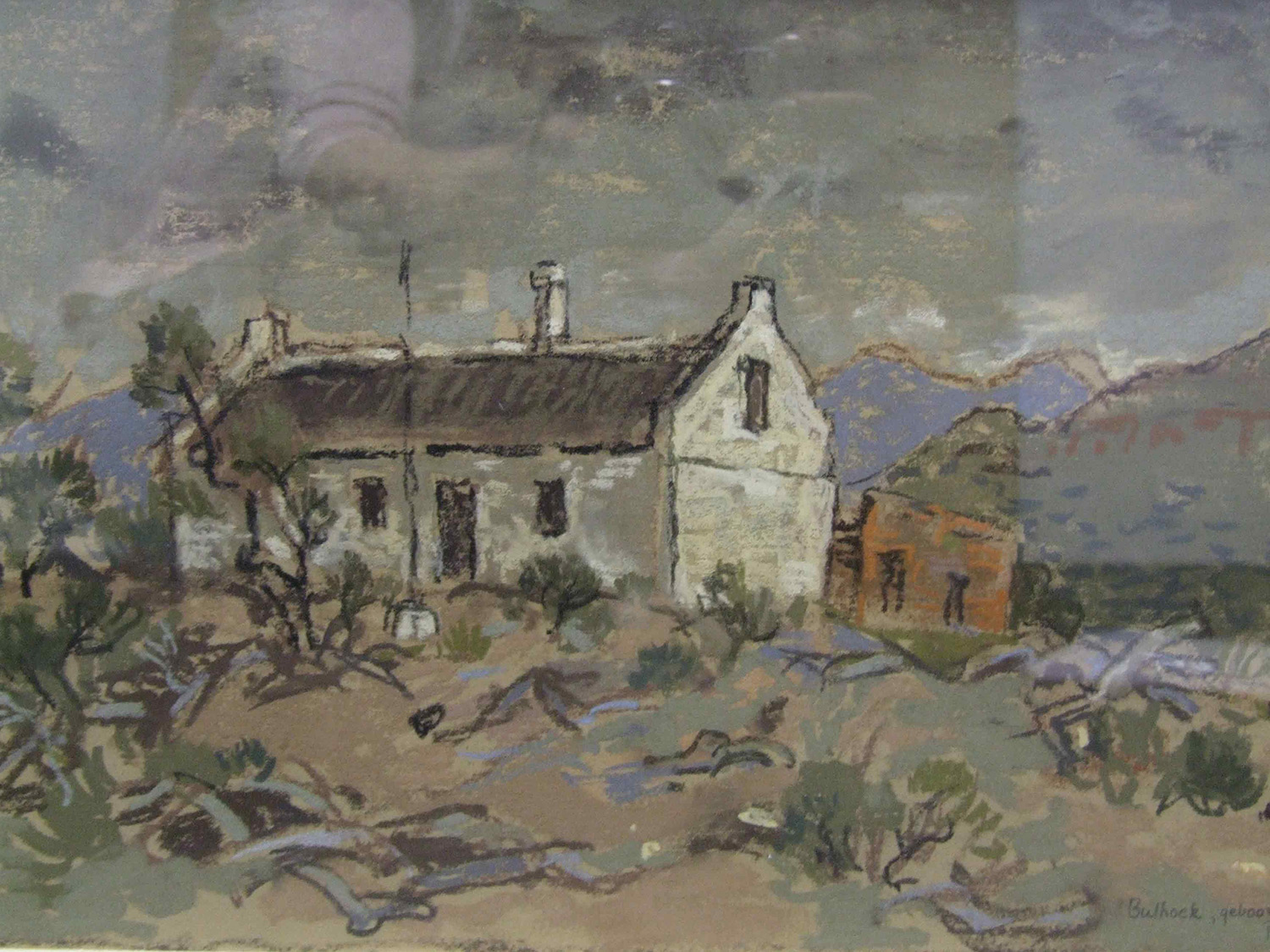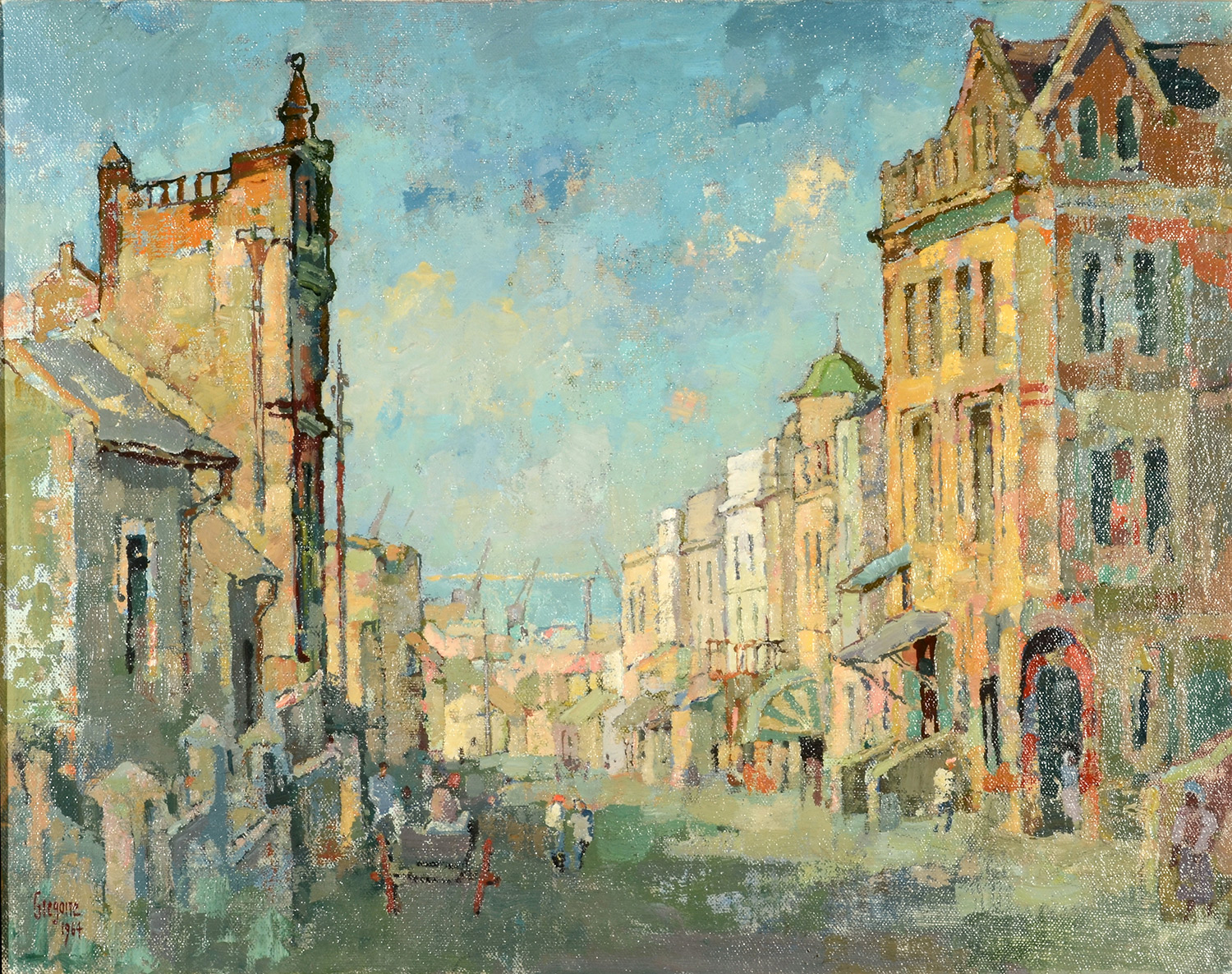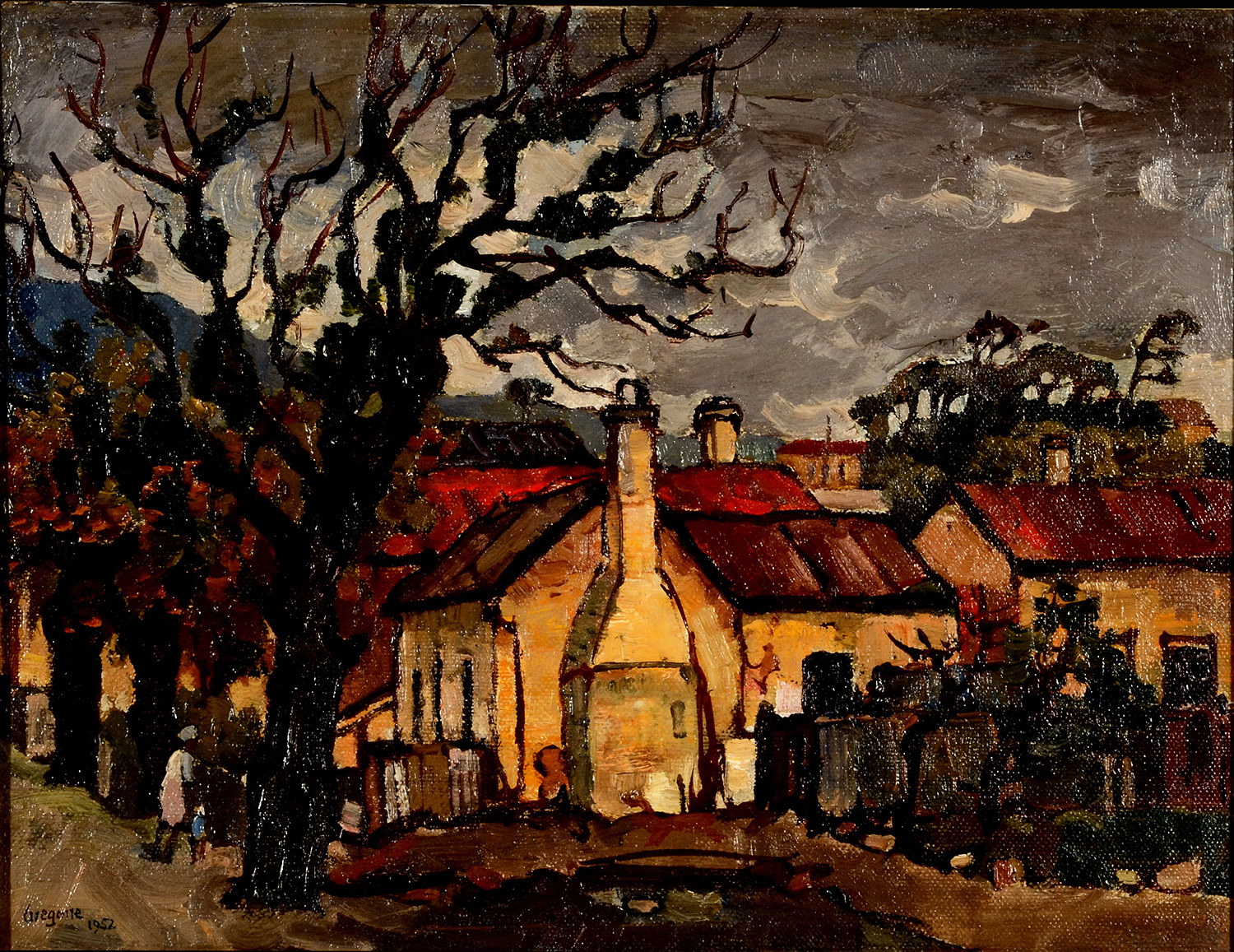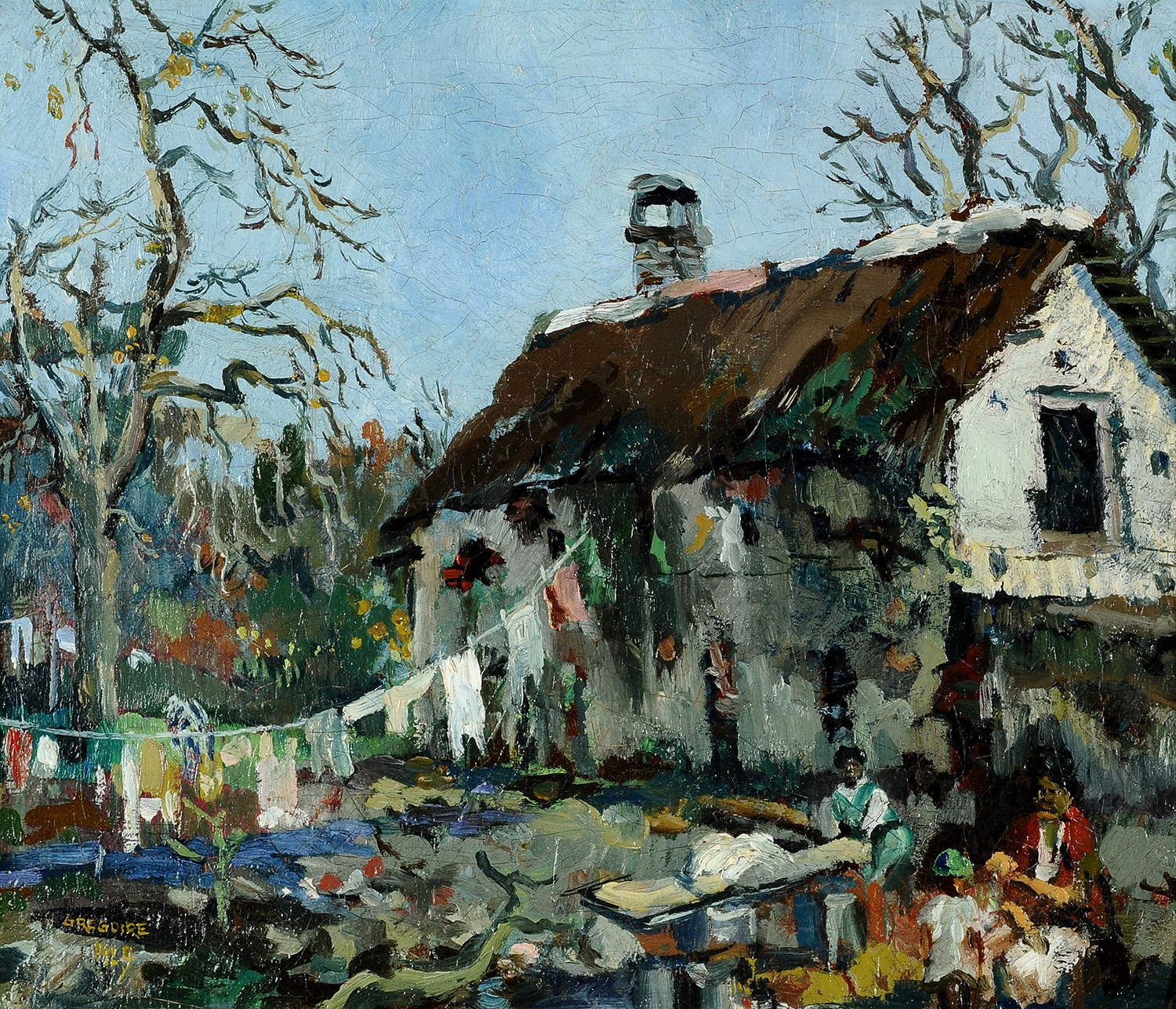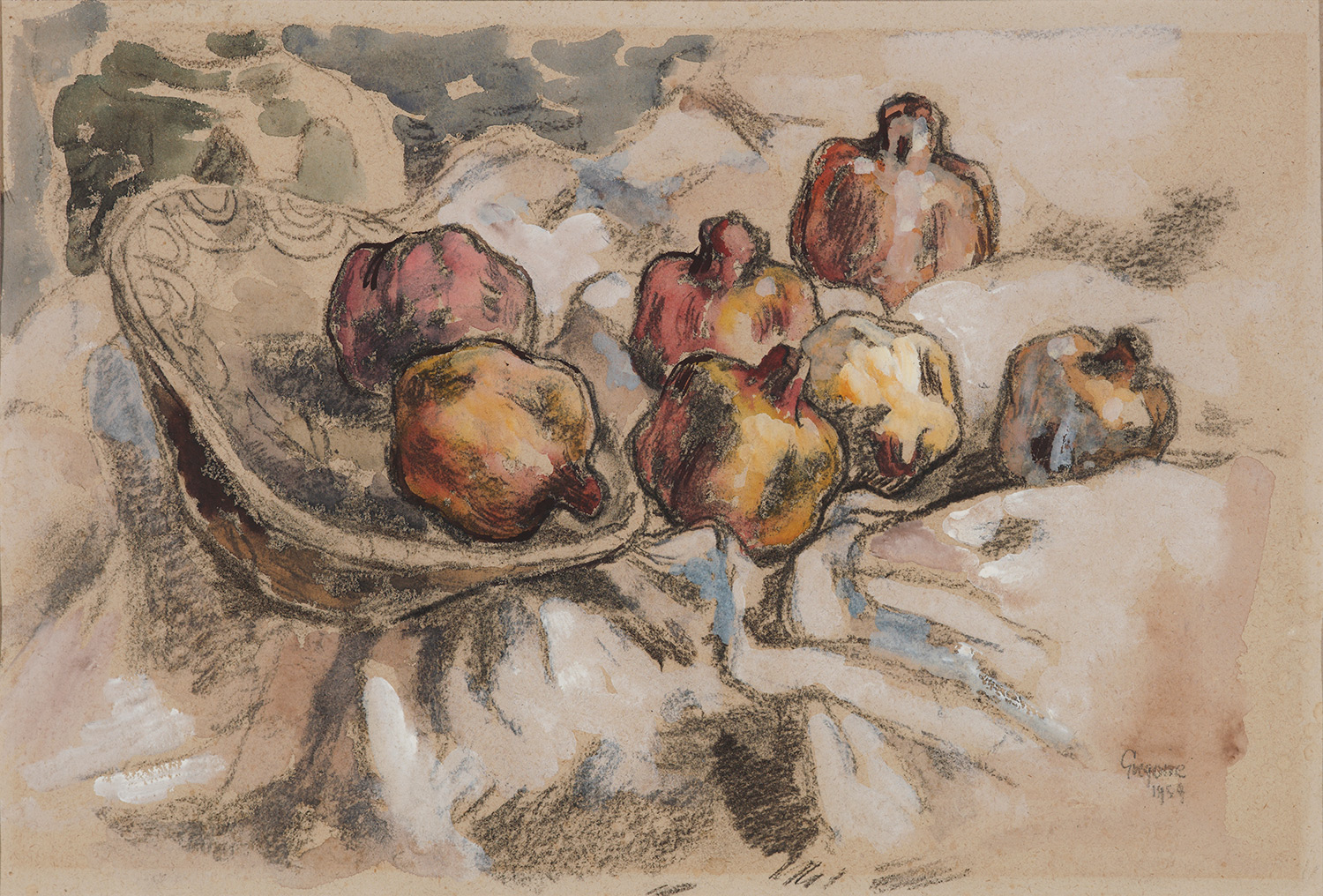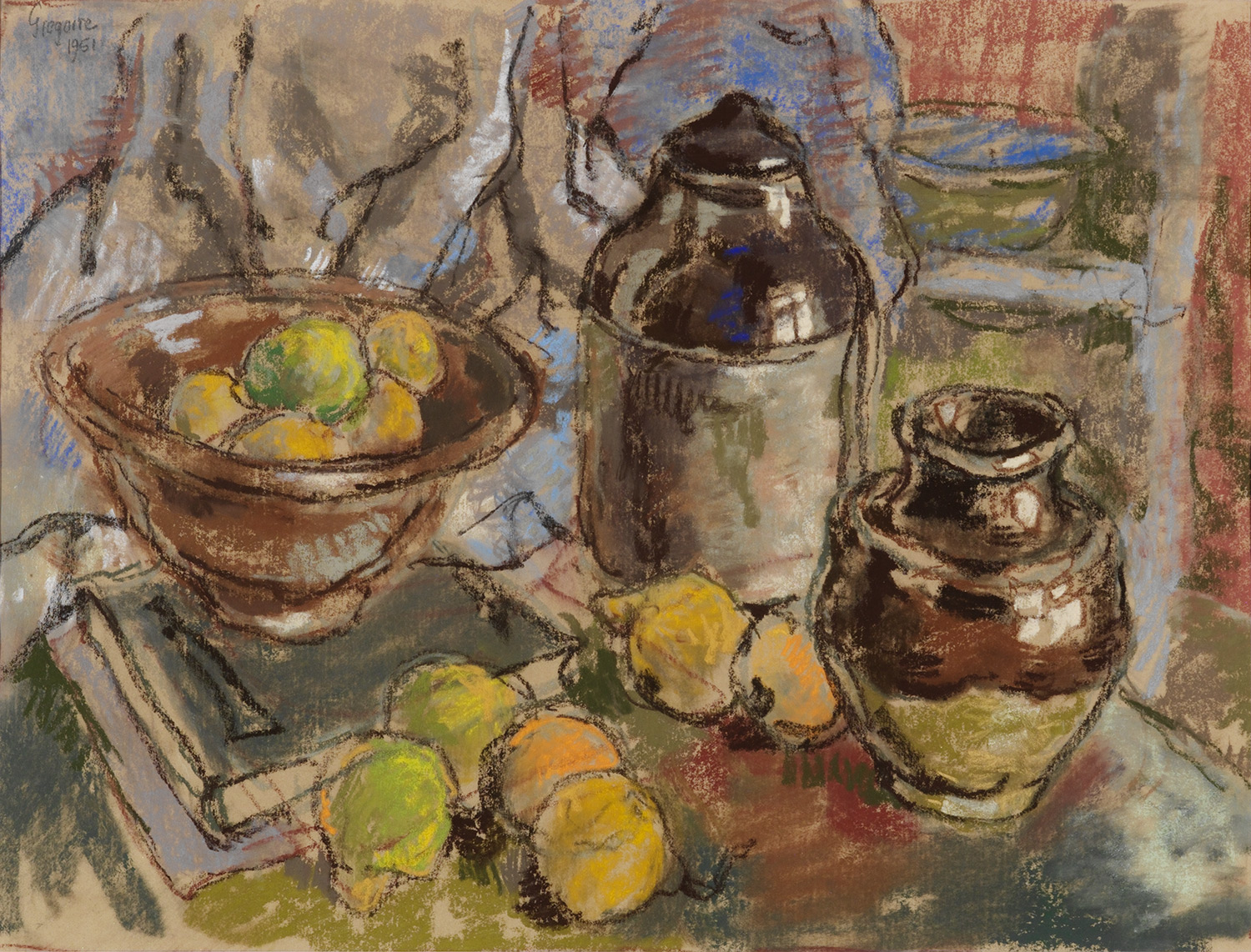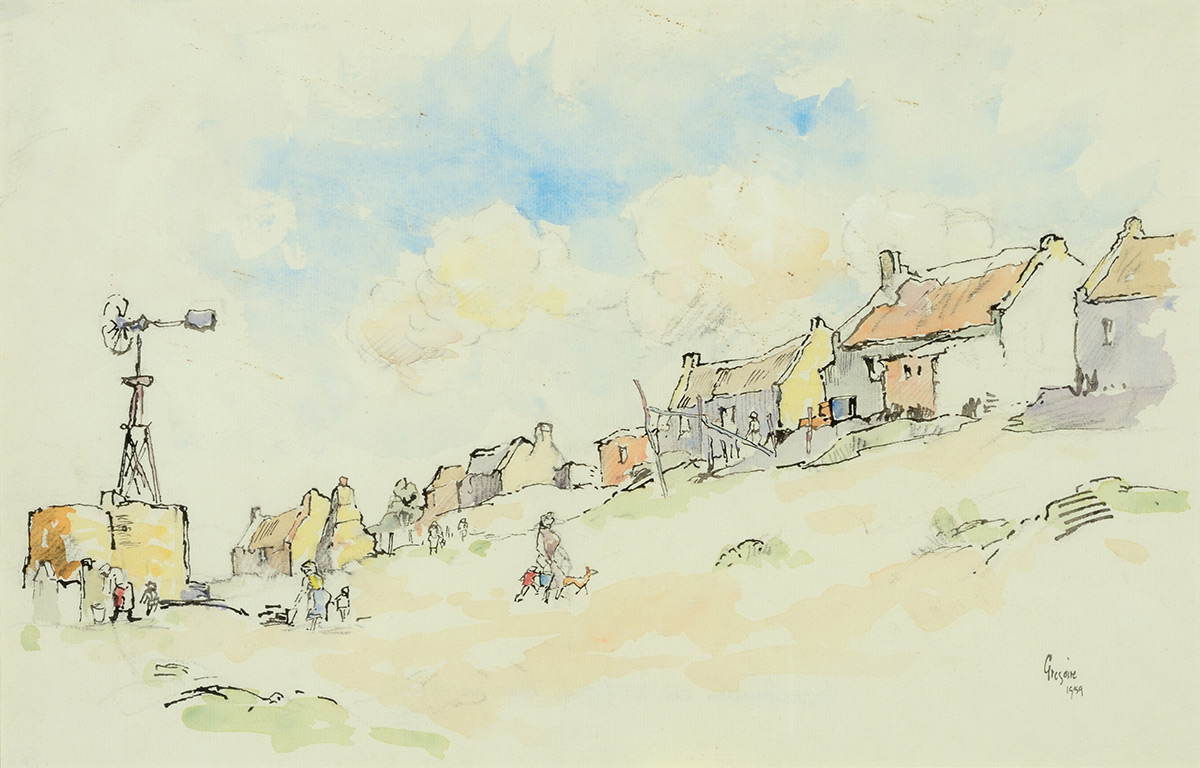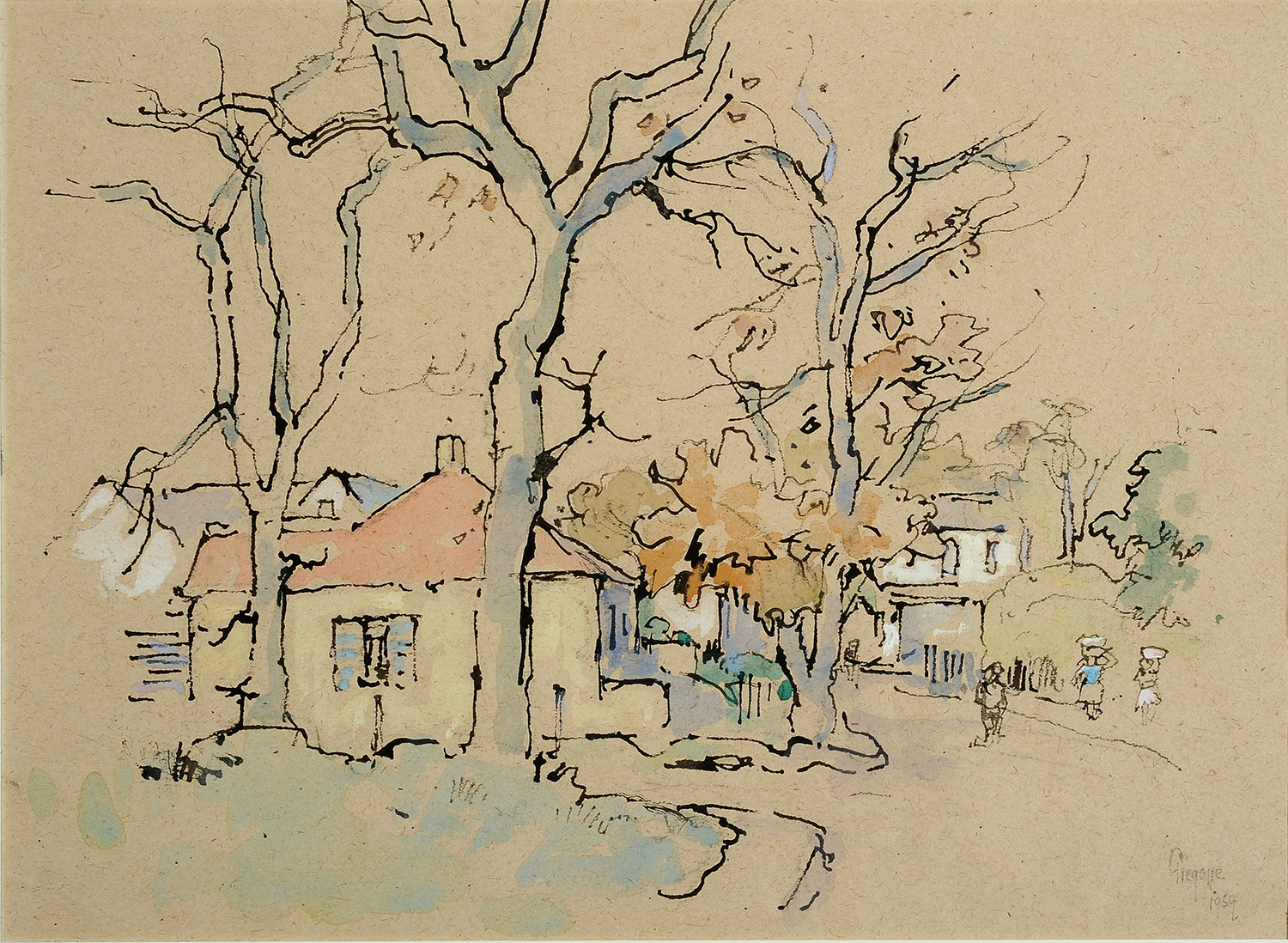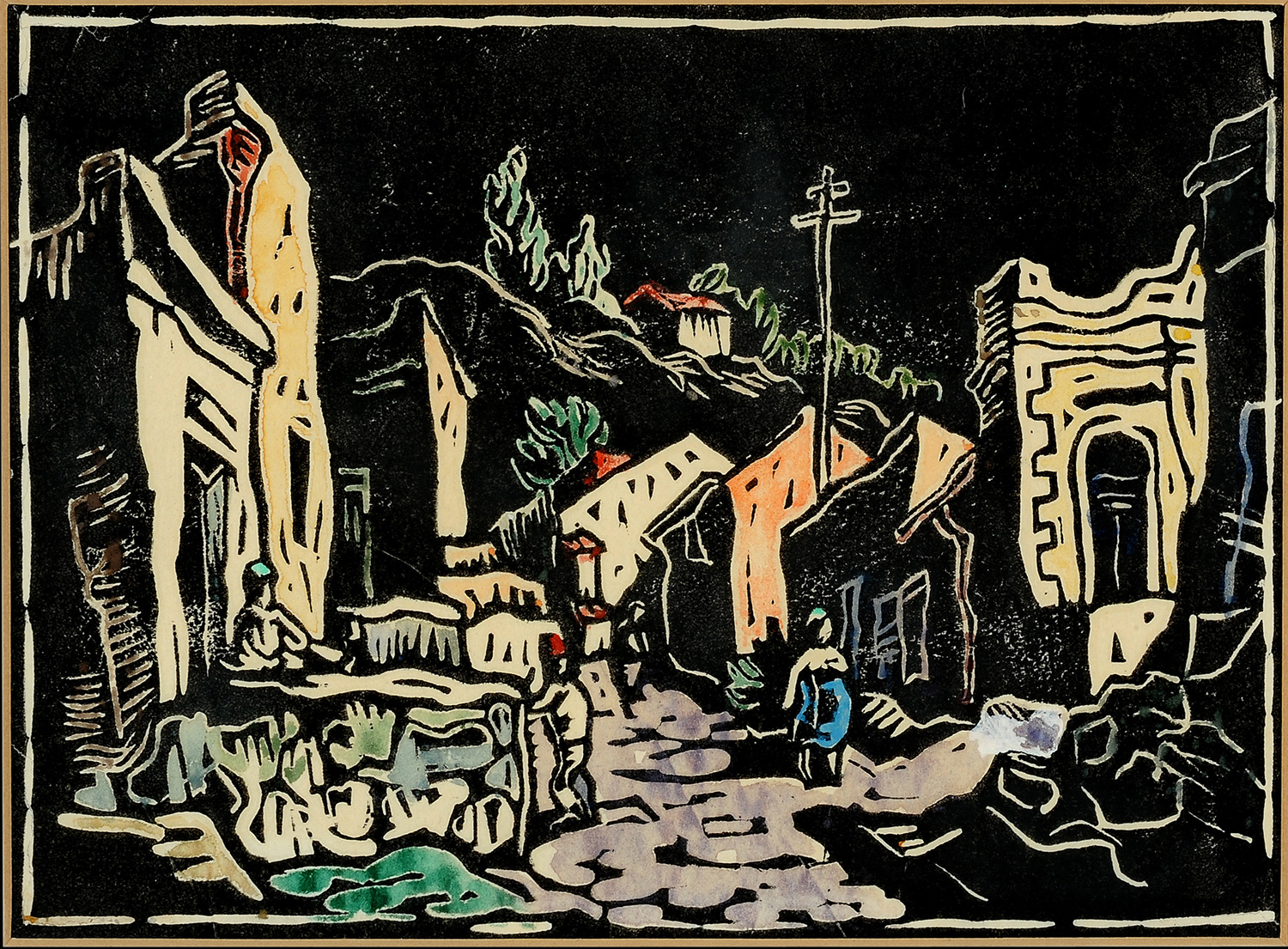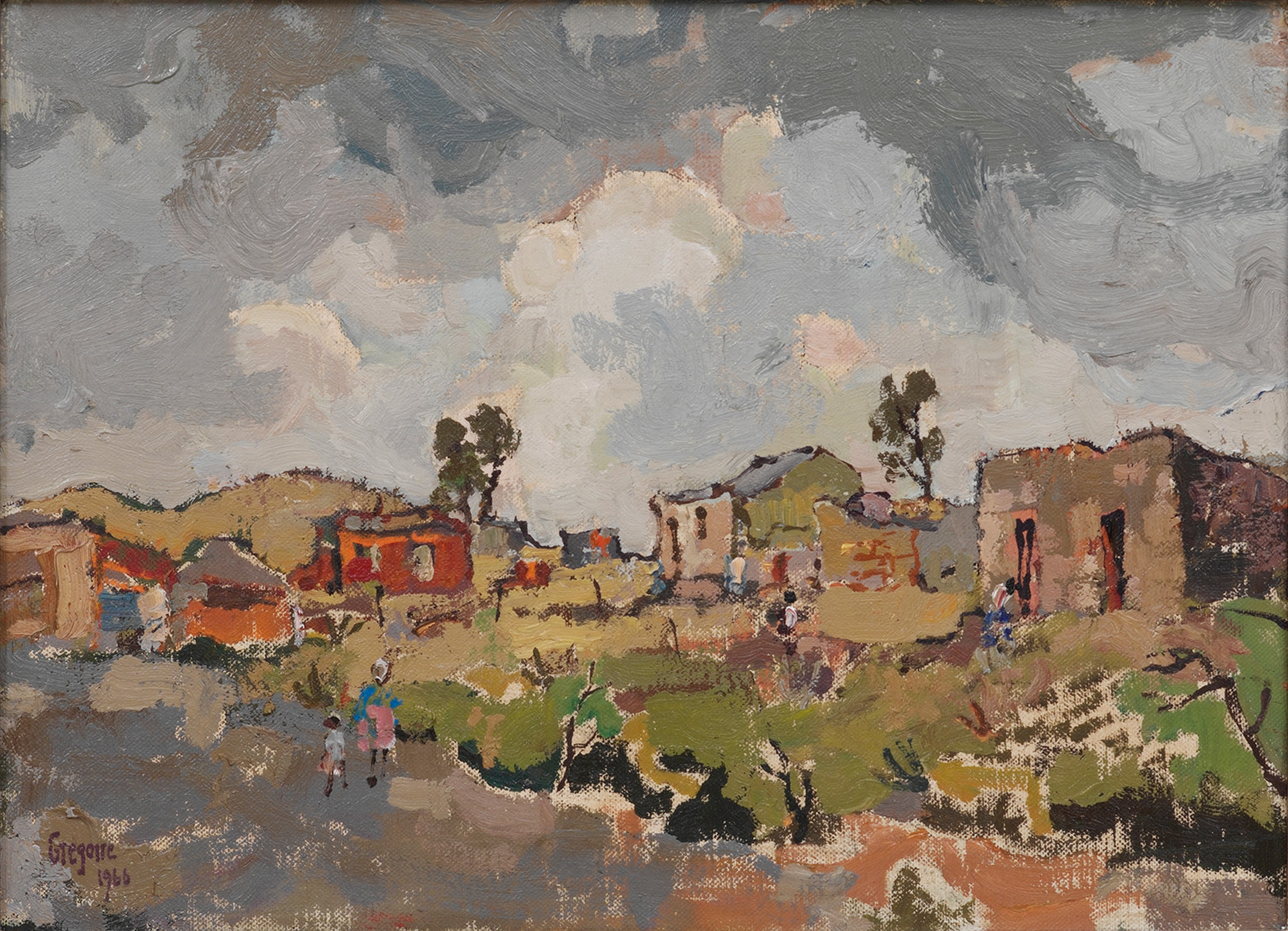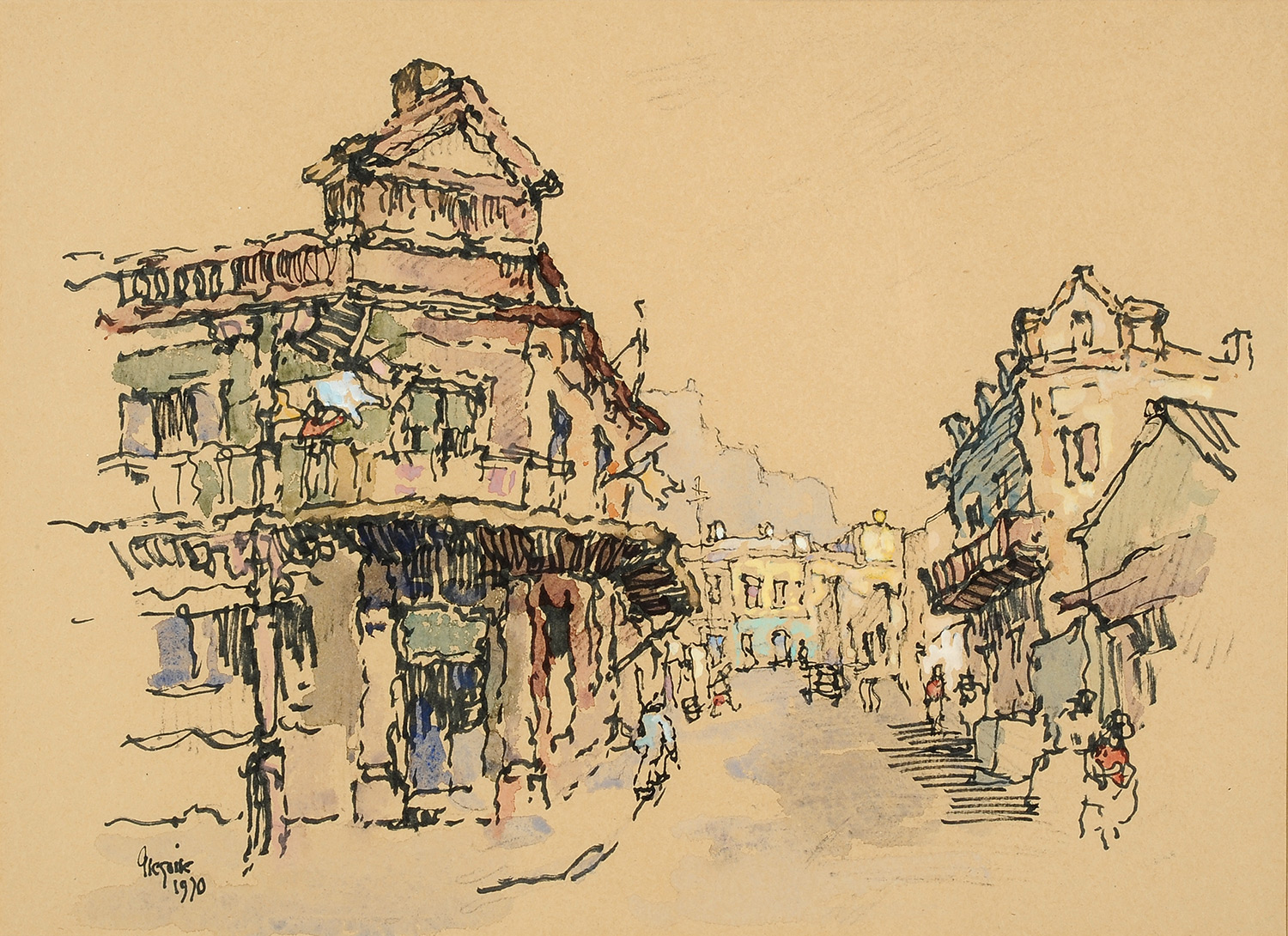Gregoire BOONZAIER (1909 – 2005)
BIOGRAPHY
Gregoire Boonzaier was born in Newlands, Cape Town. The son of the political cartoonist DC Boonzaier, he benefited from close contact with his father’s artist friends, including Pieter Wenning, Nita Spilhaus and Moses Kottler.
At the age of 14, his first two oil paintings were exhibited at Ashbey’s Gallery in Cape Town, and he went on to hold more than 100 solo exhibitions during his extensive career of more than 80 years.
In 1935, he left for London to study at Heatherley’s School of Art with fellow artists Terence McCaw and Frieda Lock. There, he was exposed to the European influences of Van Gogh, Cezanne, Utrillo, Braque and Christopher Wood. He travelled to several European countries, including France and Russia, and painted in Spain with Terence McCaw. In 1937, he enrolled in a one-year course with the Central School of Arts and Crafts, concentrating on graphic art techniques.
On his return to South Africa, he became a founder member of the New Group with Terence McCaw, Frieda Lock, Lippy Lipshitz and others, and was elected its first chairman in 1938. The New Group provided a stage for many younger artists, who found the academicism and conservatism in South Africa stifling.
Boonzaier has been described as ‘an exponent of Cape Impressionism’ and his work includes portraits, self-portraits, flower studies, still-life studies, tree studies, rural landscape scenes and interior scenes. However, his paintings have a harder edge than that of most Impressionists and his subject matter often reflects a strong social awareness. Over several decades, he produced hundreds of paintings and graphics documenting the Malay Quarter (Bo-Kaap) and also District Six, which serve as a chronicle of the culture and social texture of the neighbourhood long after it was destroyed by apartheid forced removals. Boonzaier was one of the first artists to paint ‘squatter camps’ or informal shack lands, and enjoyed drawing portraits of all the interesting characters he would meet on his excursions.
In 1945, he became a founding member of the SA Association of Arts (SAAA) and served as a trustee of the SA National Gallery (now Iziko SANG) for the subsequent six years. In this position, he tried to raise the levels of art appreciation and understanding within the country, and travelled extensively in the platteland, exhibiting and teaching under the auspices of the Department of Adult Education.
In 1948, Boonzaier participated in the Exhibition of South African Art at the Tate Gallery in London, along with 43 other South African artists.
In 1959, he was awarded the SA Medal of Honour for Painting by the SA Akademie vir Wetenskap en Kuns and, in 1964, the first book on his work, written by Dr FP Scott, was published.
In 1967, the Pretoria Art Gallery presented the first retrospective exhibition of his paintings, and in 1978, to celebrate the occasion of his 50th year as a professional artist, Boonzaier was honoured by Potchefstroom University with a retrospective exhibition. Two further retrospective exhibitions were held in the 1980s – in 1981 at the University of Stellenbosch, and in 1985 at the University of Pretoria.
Boonzaier was awarded an honorary doctorate by the University of the Orange Free State in 1980 and another by the University of the Western Cape in 1993.


